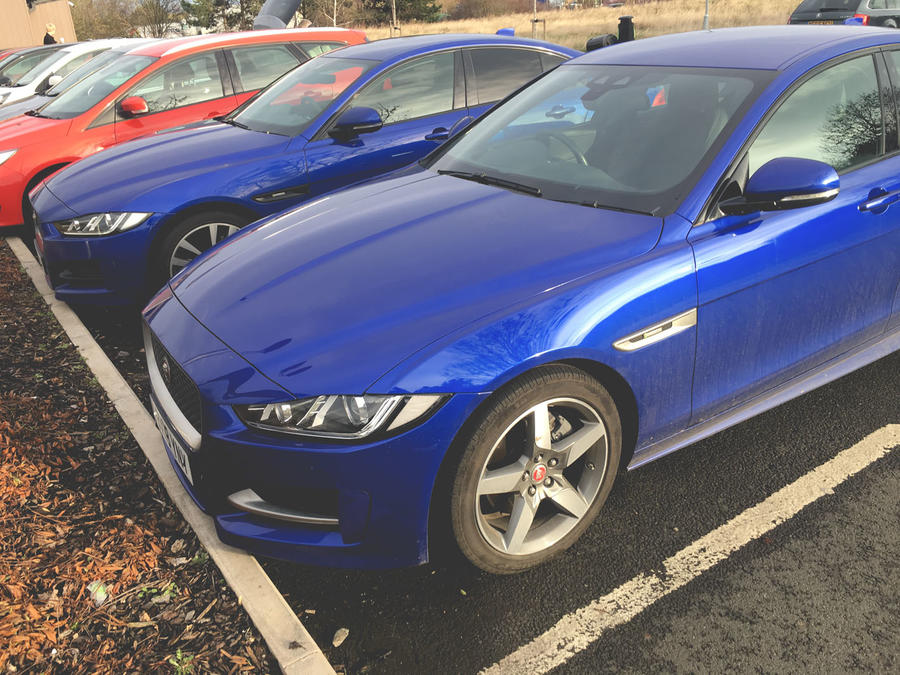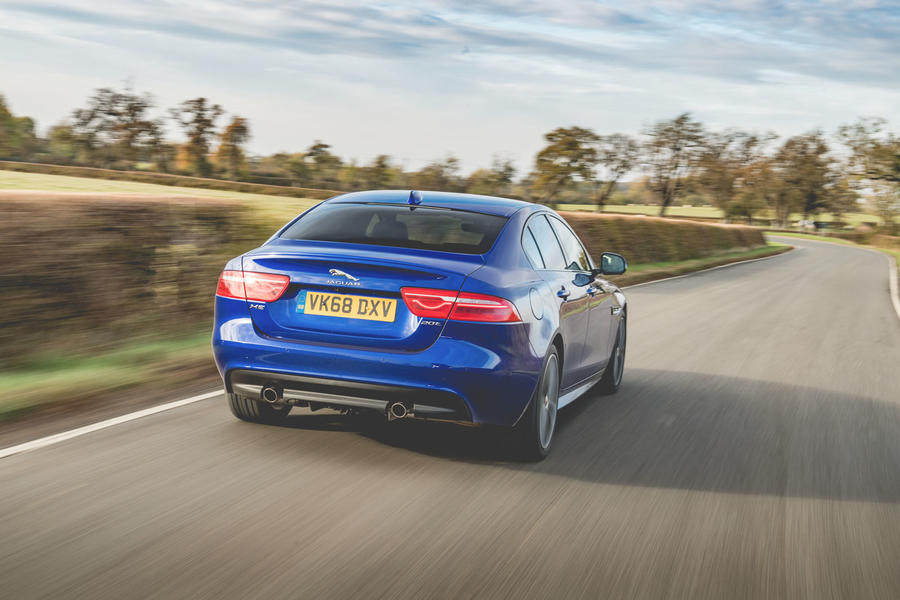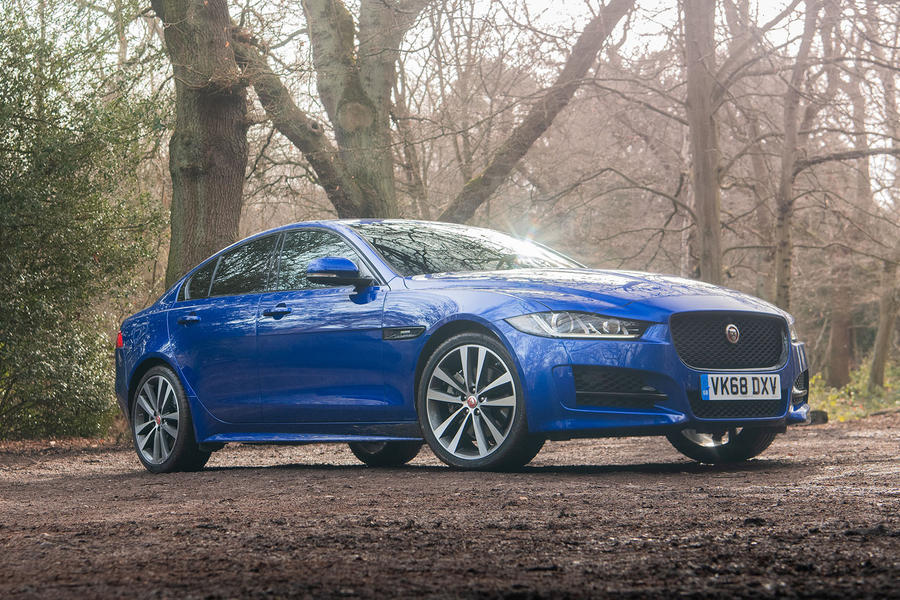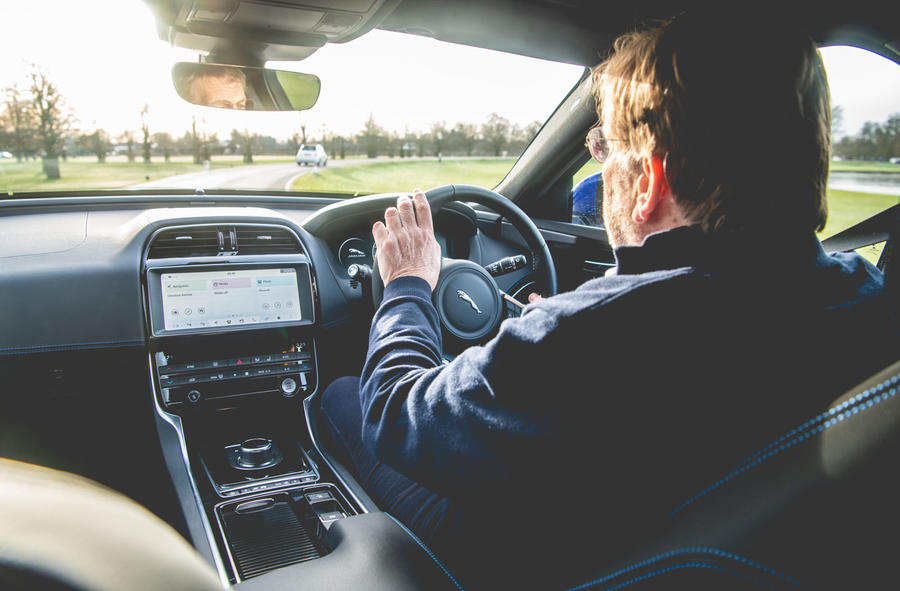Should more people searching for a true driver’s car consider Jaguar’s compact saloon? We’re finding out over six months with an XE
Why we’re running it: To evaluate Jaguar’s under-appreciated entry saloon and discover whether some of the UK’s BMW 3 Series and Audi A4 buyers need to think a little deeper
Month 1 – Specs
Life with a Jaguar XE: Month 1
Racking up the miles quickly – 27th March 2019
The Jag has had a busy baptism – I’ve done more than 3200 miles in our first four weeks together. I’ve left it at the airport a couple of times recently, and enjoyed that frisson you get on a flight home, knowing there’s something decent waiting in the car park. The engine’s a lot looser now, which reflects in the fuel consumption: 42mpg.

Mileage: 4108
Does this fine driver’s car deserve to snare more buyers or not? We aim to find out – 13th February 2019
It’s an odd time, you may think, to take on a Jaguar XE long-termer. The company has just refreshed its smallest saloon to distinguish it better from the bigger XF. And its showroom performance hasn’t been exactly stellar.
But step back a bit. The XE is Jaguar’s most naturally agile and sporty saloon, because of its compactness light weight. That, if you think about it, makes it arguably the best-handling Jag saloon of all time. And we already know enough of the coming refresh to be confident that the changes will mostly be cosmetic: the XE will change very little as a driver’s car.
Step back further: we also know that the XE and XF are likely to be combined into one saloon model from the early 2020s, which is to say that despite the global success of SUVs, Jaguar continues to see itself as a maker of saloons.
Which neatly reveals our purpose here: to see if we agree. Our XE is exactly the kind of £40,000 upper-mid-spec machine a car-minded user-chooser might go for: the basic car comes well equipped, and the R-Sport pack adds 18in wheels, sports suspension, xenon headlights and sporty decor, including a restrained bodykit. With no extras, this set-up costs £34,500. Our options add £5480.
Of all the additions, the one I’d most readily shell out for is our car’s £650 worth of Caesium Blue metallic paint, which positively draws people to the XE’s fine shape and stance. It’s a great-looking car: low, sleek and shrink-wrapped around an elegant set of mechanical muscles. But the company has decided it doesn’t stand out well enough in a crowd, which is what the mid-life changes are about. Changes we’ll experience for ourselves when we swap into a facelifted car in a few months’ time.
Our engine is a 197bhp petrol turbo four, matched as standard with an eight-speed ZF auto, albeit with Jaguar-specific software that affords you more precise control of the gearchange regime, via either the twist controller on the console or the steering wheel paddles. You can elect for a Sport regime on the gear selector and a Dynamic setting from a special console switch, both of which sharpen responses further.

It may seem an error to choose the least powerful of three petrol fours (197bhp, 247bhp and 296bhp) but the choice is made advisedly. The first step adds £2500 and shaves a second from an already decent 7.2sec 0-60mph time. The most powerful engine cuts the 0-60mph time to 5.4sec and makes the R-Sport a genuinely fast car but costs a hefty £7600 extra, mostly because it has a permanent 4×4 system (that adds extra weight and less adjustable handling). Worth it if you need the extra traction and are made of money; not otherwise.
Chuck in the fact that with eight quick-shifting gearbox speeds attached, our 197bhp engine gets the car off the mark very quickly and can also quickly kick down a couple at higher speeds if needed. My only real gripes with the powertrain are a tendency of the stop/start system to shake the car uncomfortably when restarting, and a less than silky power take-up when accelerating from a crawl. Others do it better.
However, it’s the chassis that makes this a true Jaguar. And the driving position. You sit low, backside close to the floor, looking over the top rim of the steering down the longish bonnet. Because the seats offer near-ideal side support, it’s easy to imagine yourself in an amazingly affordable F-Type.
Any glance sideways affirms that the XE rides lower than most cars on the road (you have an excellent view of the whirling wheel bolts of buses) and the agility and steering accuracy constantly remind you of the advantage of lowness. Its disadvantage – in a 4.7m-long saloon – is a lack of adult-sized rear leg room (fine for kids, tolerable for early teenagers).
On the road, the XE’s size seems close to ideal. Step into it from a bigger car and you’re beguiled by its agility; drive it after a smaller model and you’re impressed by its refinement, composure and uncorrupted steering. It cruises quietly with moderately long legs on the motorway but sprints willingly on demand. The engine is quiet and very smooth when cruising; more audible when used harder. The engine note is one of the less sporty aspects. Fuel consumption is 33-43mpg, depending how you drive, but we’ve so far averaged just over 40mpg. The ride, on the Sport suspension that comes with an R-Sport model, can occasionally be a bit jittery but never leaves you discomforted on long trips. But it has enough sporting character to do well when a journey brings a bonus B-road.
On the strength of three weeks and 2000 miles, I’m pleased with the XE. It appears to suit me and the way I use cars. It feels well made (my second car in five years with zero trim rattles) even if Jaguar feels perceived cabin quality needs an upgrade.
The way it looks and drives suits the Jaguar ethos and I’d find it hard to contemplate a Jaguar range without a compact saloon. On what I’ve learned so far, the XE and its descendants deserve a long and happy life.

Second Opinion
Drove the XE for an afternoon and thoroughly enjoyed it. It undermined any impression of Jaguars as old men’s cars. If there’s such a thing as sporty composure, this car has it in spades, although I’d have liked the power delivery to be a little less lumpy off the mark.
Olgun Kordal
Jaguar XE 2.0 R-Sport specification
Specs: Price New £34,565 Price as tested £40,045 Options Heated seats £320, Caesium Blue paint £650, 18in alloy wheels £840, Black pack £530, electrically adjustable door mirrors £295, privacy glass £370, Meridian 380W audio £530, park assist and camera £1045, electric towbar £900, keyless entry £530
Test Data: Engine In-line 4cyls, 1998cc, turbocharged petrol Power 197bhp at 5500rpm Torque 236lb ft at 1200-4500rpm Kerb weight 1540kg Top speed 143mph 0-62mph 7.6sec Fuel economy tbc CO2 tbc Faults None Expenses None

Source: Autocar
